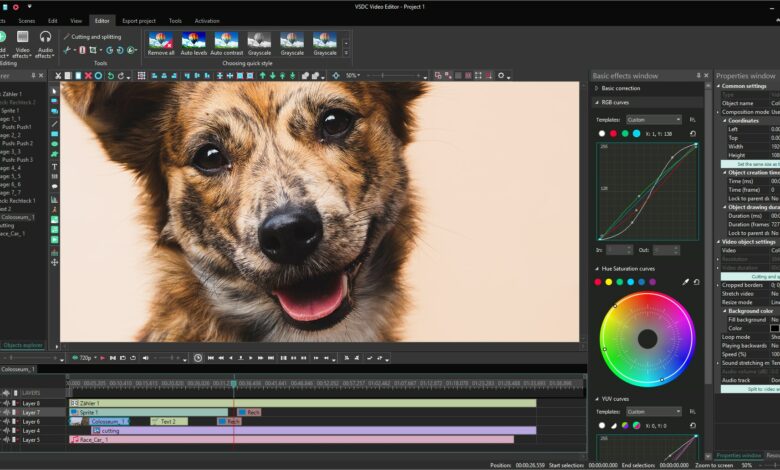How to Edit 4K Video

In the realm of digital storytelling and content creation, 4K video has become synonymous with unparalleled clarity and detail, setting a new benchmark for visual quality. As we journey through the nuances of 4K video editing, it’s essential to grasp not just the technical aspects but also the creative opportunities it presents. From the aspiring filmmaker to the social media influencer, mastering the art of 4K video editing is a game-changer, enabling creators to weave visual narratives with stunning detail and depth.
Understanding 4K Video
At its core, 4K video boasts a resolution of 3840 x 2160 pixels, a staggering leap from the standard 1080p HD video. This quantum leap in resolution not only enhances picture clarity but also allows for greater post-production flexibility. Whether cropping for dramatic effect or zooming in on key details, 4K video maintains quality, making it a favorite among professionals and enthusiasts alike. However, its benefits come with challenges, such as increased storage demands and more intensive processing requirements, which necessitate a thoughtful approach to editing workflows.
The Importance of 4K Editing
The transition to 4K editing is not merely a technical upgrade but a creative revolution. It affords filmmakers and content creators the ability to deliver experiences that are more immersive, with visuals that captivate and engage audiences like never before. In an era where content is king, the ability to edit in 4K sets apart high-quality productions from the rest, enabling creators to tell their stories with unprecedented clarity and impact.
Preparing for 4K Editing
Venturing into 4K editing requires a solid foundation, beginning with the right hardware and software setup.
Hardware Requirements
The backbone of efficient 4K editing is powerful hardware. A high-caliber processor, such as an Intel i7 or AMD Ryzen 7, paired with a top-tier graphics card, provides the computational muscle needed. RAM plays a crucial role, with 32GB being the sweet spot for handling large 4K files smoothly. Storage is another critical consideration; solid-state drives (SSDs) offer the speed necessary for quick access to high-resolution footage.
Software Requirements
Choosing the right editing software is pivotal in your 4K editing journey. Programs like Adobe Premiere Pro, Final Cut Pro X, and DaVinci Resolve stand out for their comprehensive support for 4K media. These platforms offer a blend of powerful editing tools and color grading capabilities, making them ideal for creators aiming to produce professional-level content. For those seeking a free 4K video editor options such as DaVinci Resolve or VSDC Free Video Editor offer robust editing features at no cost, providing a viable entry point for beginners and professionals alike.
Importing Your 4K Footage
The first step in your editing workflow is to import your 4K footage into your editing software. This process is crucial, as it sets the stage for a smooth editing experience. Ensure that your project settings align with your video’s resolution and frame rate to maintain the integrity of your footage throughout the editing process.
Editing Your 4K Video
With your 4K footage ready, you embark on the creative phase of cutting, trimming, color correcting, and adding effects.
Basic Editing Techniques
Begin with cutting and trimming to sculpt your story, removing unwanted parts and focusing on the segments that best convey your message. Next, dive into color correction to balance and enhance your footage, ensuring that each shot looks consistent and vibrant. Color grading further allows you to stylize your video, infusing it with a unique atmosphere or mood. Adding transitions and effects can elevate the narrative flow, making your content more dynamic and engaging.
Advanced Editing Tips
For those ready to push the boundaries of 4K editing, exploring advanced techniques such as layering and keyframe animation opens new dimensions of creativity. Layers enable the integration of text, secondary footage, and graphics, enriching the storytelling experience. Keyframe animation introduces motion to these elements, adding a layer of sophistication to your edits.
Exporting Your 4K Video
Here is the paragraph written in simpler words with the anchor text and URL included once:
Here is the paragraph again with some additional words, and the anchor text included in a more natural way:
The final and crucial step in the 4K video editing process is exporting your polished masterpiece. Carefully selecting the appropriate format and codec is critical to preserving the outstanding quality of your hard work, while also ensuring compatibility across various platforms and devices. The HEVC (H.265) codec emerges as a popular and wise choice, offering an excellent balance between superb quality and efficient file size. If you want to explore AI-powered text-to-video capabilities, check out the AI Text-to-Video feature.
Conclusion
Editing 4K video is both an art and a science, requiring a blend of technical skill, creative vision, and the right tools. As you embark on this journey, remember that each project is an opportunity to refine your skills and push the boundaries of what’s possible. With practice and perseverance, you’ll unlock the full potential of 4K video, transforming your visions into vivid realities.